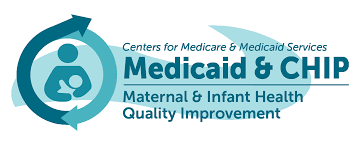Jurisdictions are increasingly exploring ways to divert youth accused of delinquent behavior from the justice system. Compared to young people who are arrested and prosecuted in juvenile court, young people who are diverted from formal court processing are less likely … Read More
Judicial

Modernizing Minor Guardianship in State Courts
More than 4% of all children live in kinship care arrangements, where relatives are responsible for children who may or may not have a living biological parent. One such arrangement is commonly known as minor guardianship, where caregivers can petition … Read More

Adoption and Guardianship for Children in Kinship Foster Care
The laws dictating how adoption and guardianship are granted, by which court, and what those options entail are developed at the state and tribal levels, so the intricacies for obtaining these legal relationships differ. The Brief The brief provides general … Read More

Children in Residential Treatment Facilities Face Multiple Risks: Senate Report
Children who are in residential treatment facilities are at risk for sexual and emotional abuse, physical restraint and overmedication, a new Senate report found. The report, conducted by the Senate Committee on Finance and the Senate Committee on Health, Education, Labor, … Read More

Children Missing From Care
Sound Policy and Practice Recommendations Key Definitions It is important for any agency drafting or implementing policies for responding to a missing child to avoid overly complicated or overly restrictive definitions. Care should be taken to ensure that each term … Read More

Improving Timely Health Care for Children and Youth in Foster Care Driver Diagram and Change Ideas
A driver diagram shows the processes or systems that affect the aim of your quality improvement (QI) project and determine what you need to do to improve outcomes. Use the state Medicaid and CHIP improving timely health care for children … Read More

Supporting Timely and Successful Reunifications
Safe and timely family reunification is the primary permanency option for most children and youth who have been removed from their parent’s care. All children belong with family, and family separation is a traumatic experience for both children and parents. … Read More

The Role of Parent Partner Programs in Supporting Prevention and Reunification
A brief from Casey Family Programs discusses the positive impacts of parent partner programs in child welfare, such as offering guidance and hope to parents navigating challenging circumstances. Focusing on reunification, these programs provide support by drawing on the firsthand experiences of … Read More

The Importance of Father Engagement in Family-Centered Reunification
In January 2024, the National Quality Improvement Center on Family-Centered Reunification (QIC-R) presented a webinar, “Building a Culture of Father Engagement to Enrich Family-Centered Reunification,” which focused on the importance of including fathers in the child welfare system. The webinar reviews the … Read More

Transracial Adoption Conversations (T.R.A.C.) Coaching: Engaging Transracial Adoptive Caregivers in Conversations on Race and Meeting Children’s Racial Identity Needs Over the Lifespan
Transracial adoptions continue to grow in the United States, and transracial adoptions have outpaced the growth of same race adoptions. Between 2005-2007 and 2017-2019, the number of transracial adoptions increased by 58% while the number of same race adoptions increased … Read More
